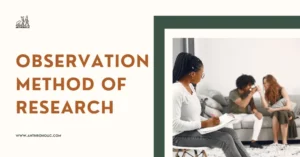AI Answer Evaluation Platform Live Now. Try Free Answer Evaluation Now
Xenophobia
Xenophobia, derived from the Greek words “xenos” (foreign) and “phobos” (fear), refers to an irrational or intense fear or hatred of individuals from other nations, cultures, or ethnic groups. It has been a recurring social issue worldwide, manifested in various forms such as discrimination, stereotypes, violence, and restrictive immigration policies [1].

Origin and History of Xenophobia
The Ancient Roots
Xenophobia is not a modern construct but has roots in ancient history. The ancient Greeks, for instance, referred to non-Greeks as “barbarians,” indicative of an existing xenophobic attitude [2].
Xenophobia in the Modern Era
Modern history has also been riddled with numerous instances of xenophobia, ranging from the American “Yellow Peril” fear of Asian immigrants in the 19th century to the ongoing refugee crisis in Europe [3].
Causes of Xenophobia
Many factors contribute to xenophobia:
- Economic Competition: Immigrants are often seen as economic threats, leading to xenophobia [4].
- Cultural Differences: Differences in language, customs, or religion can provoke xenophobia.
- Political Manipulation: Politicians sometimes use xenophobic rhetoric for their gain [5].
Effects of Xenophobia
Xenophobia can have dire effects, both on individuals and societies:
- Individuals: Victims of xenophobia can experience mental health issues such as anxiety, depression, and PTSD [6].
- Societies: Xenophobia can lead to social unrest, violence, and division among different ethnic or racial groups.
Examples of Xenophobia
| Country | Instance of Xenophobia | Year |
|---|---|---|
| USA | Chinese Exclusion Act | 1882 |
| South Africa | Anti-immigrant violence | 2008-2015 |
| Australia | “White Australia” Policy | 1901-1973 |
Tackling Xenophobia
Addressing xenophobia requires a multi-faceted approach:
Legal Measures
Governments should implement strict anti-discrimination laws and ensure their effective enforcement [7].
Education and Awareness
Schools should teach about diversity and the benefits of multiculturalism. Awareness campaigns can also help to dispel stereotypes and prejudices.
Dialogue and Interaction
Encouraging interaction between different ethnic groups can reduce fear and mistrust [8].
Xenophobia and its Global Impact
Xenophobia and Human Rights
The prevalence of xenophobia often leads to the violation of basic human rights. Victims often suffer from social exclusion, discrimination, violence, and other forms of abuse. These abuses can lead to physical and mental health problems, diminished quality of life, and in extreme cases, even death [9].
Xenophobia and Global Migration
The issue of xenophobia becomes particularly significant in the context of global migration. Hostility towards immigrants often results in restrictive immigration policies. These policies, in turn, force individuals to embark on dangerous migration routes, and create an environment conducive to exploitation and abuse [10].
Policy Responses to Xenophobia
Responses to xenophobia vary across the globe. Some countries, like Canada, have developed inclusive policies that actively combat xenophobia and encourage multiculturalism [11]. However, other nations, like Hungary, have been criticized for policies that seem to encourage xenophobia, particularly against migrants and refugees [12].
Overcoming Xenophobia: A Collective Effort
While governments and institutions play a significant role in curbing xenophobia, it’s important to remember that overcoming xenophobia is a collective effort. Communities and individuals can contribute to this cause by:
- Promoting cultural exchanges to foster understanding and tolerance.
- Participating in peaceful protests against xenophobic incidents and policies.
- Educating oneself and others about the negative impacts of xenophobia.
Conclusion: A Future Without Xenophobia
\In a globalized world, the prevalence of xenophobia presents a major hurdle towards establishing peaceful and harmonious societies. By understanding the origins, causes, and effects of xenophobia, and by actively working towards inclusivity and tolerance, it is possible to envisage a future without xenophobia.
References
[1] Kaya, A., & Tecmen, A. (2020). Xenophobia: A Critical Introduction. Palgrave Pivot.
[2] Isaac, B. (2006). The Invention of Racism in Classical Antiquity. Princeton University Press.
[3] Daniels, R. (2002). Coming to America: A History of Immigration and Ethnicity in American Life. HarperCollins.
[4] Scheve, K. F., & Slaughter, M. J. (2001). Labor market competition and individual preferences over immigration policy. Review of Economics and Statistics, 83(1), 133-145.
[5] Hainmueller, J., & Hopkins, D. J. (2014). Public Attitudes Toward Immigration. Annual Review of Political Science, 17, 225-249.
[6] Pumariega, A. J., Rothe, E., & Pumariega, J. B. (2005). Mental Health of Immigrants and Refugees. Community Mental Health Journal, 41(5), 581-597.
[7] James, Z. (2017). Immigration policy, enforcement and xenophobia in the age of terrorism. Migration Letters, 14(2), 303-316.
[8] Pettigrew, T. F. (1998). Intergroup contact theory. Annual Review of Psychology, 49, 65-85.
[9] Fazel, M., & Betancourt, T. S. (2018). Preventive mental health interventions for refugee children in high-income settings: a narrative review. The Lancet Child & Adolescent Health, 2(2), 121-132.
[10] Triandafyllidou, A. (2018). Global Migration: Old Assumptions, New Dynamics. Emerald Group Publishing.
[11] Kymlicka, W. (2015). Multiculturalism: Success, Failure, and the Future. Migration Policy Institute.
[12] Pogonyi, S., Kovács, M., & Körtvélyesi, Z. (2018). The Politics of “Hungarian Identity” in Europe. Social Research: An International Quarterly, 85(3), 641-650.




